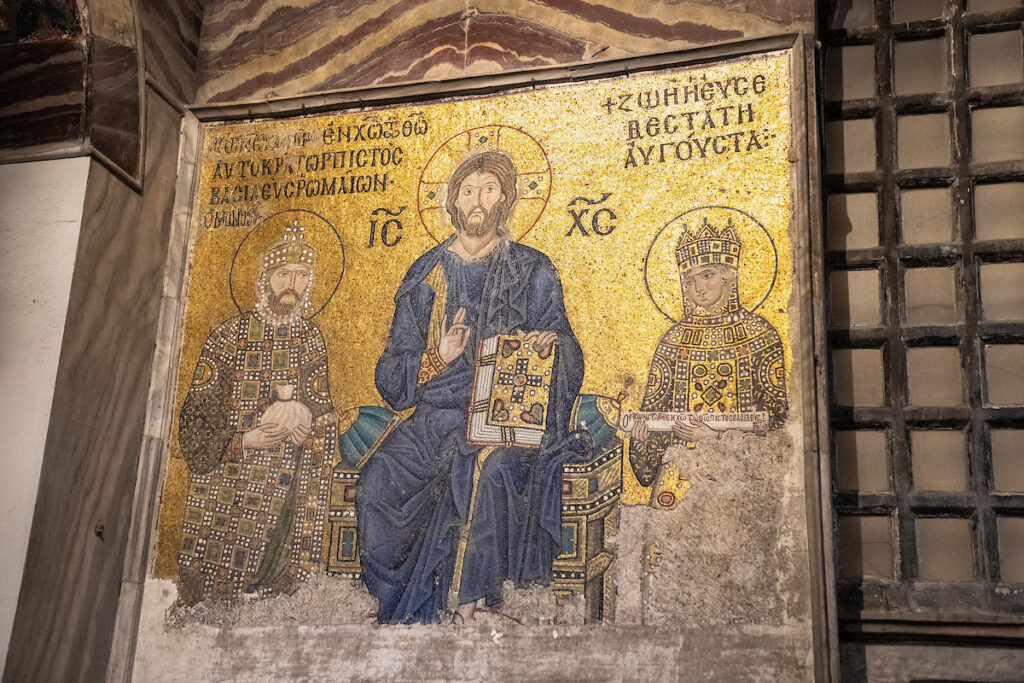During our latest trip to Istanbul, Turkiye, we had the once in a lifetime opportunity to see the famed and beautiful Hagia Sophia. The larger-than-life architectural structure dominates the Sultanahmet Square, drawing in 3.5 million visitors each year while still remaining an operating mosque. Its large dome structure was one of the first of its kind hundreds of years ago when it was built.

Over its history in the Byzantine and Ottoman Empires, the building has been a Catholic church, a mosque, and a museum. The original structure of the Hagia Sophia was constructed in the year 325, but after hundreds of years full of war, earthquakes, fires, and looting, the structure as we see it today was finalized in the 1300’s. This large domed-building was regarded as one of the largest cathedrals for a millennium after its construction and still stands as a historical and religious monument.



As of this year, Turkish President Recep Tayyip Erdoğan has made many changes to the way the mosque functions. Tourists must now enter at a separate entrance, guided tours are no longer available, an entrance fee is required, and only the upper section and small parts of the ground section of the mosque are open for viewing. These changes in procedure are in response to overcrowding and acts of vandalism as well as respect for the Muslims who still use the mosque to worship.

Most visitors start their visit at the Hagia Sophia History & Experience Museum to walk through an interactive immersive experience taking guests on a journey through the history of the famed site. Visitors step back into the ancient world of Constantinople and become immersed in a sensory journey through the ages.

A 23-foot tall oak and bronze door leads the way into the mosque, named the Imperial Door or Emperors Door. Beyond the towering door is the grand dome, the structure’s most striking feature and architectural feat of its time standing at 182 ft 5 inches. Held up by giant marble columns, the dome is covered in a decorative design that has changed many times during its existence.

Covering the walls in multiple areas of the mosque are incredibly detailed mosaics. Many of the mosaics feature figures of Christianity like Jesus, Virgin Mary, and angels. When the building was converted from a cathedral to a mosque, a prayer niche (mihrab) and pulpit (minbar) were added and other elements were removed.


Hagia Sophia is open every day from 9 a.m. to 7:30 p.m. The mosque remains partially open to tourists and non-worshippers during prayer hours, with barriers separating guests from the prayer section. During noon prayer on Friday’s, a sacred day to Muslims, the mosque remains closed. Visitors must pay a $27.00 entrance fee for anyone over the age of eight.

Though guided-tours are no longer offered, guests can scan a provided QR code and listen to an audio tour that covers a few main areas. These key areas in the upper section are covered: “Heaven and Hell Gate”, the 11th-century Viking Script graffiti, the mosaic of Constantine IX and Empress Zoe, and the Deësis mosaic of Jesus Christ, Virgin Mary and John the Baptist.

Guests are asked to dress modestly, with women covering their shoulders, knees, and heads. Outer garments can be purchased on site if needed. You must also remove your shoes before entering the prayer hall as a sign of respect. As the Hagia Sophia is still an operating mosque, be mindful of prayer hours and remain respectful during your visit to one of the most amazing architectural structures in the world.

